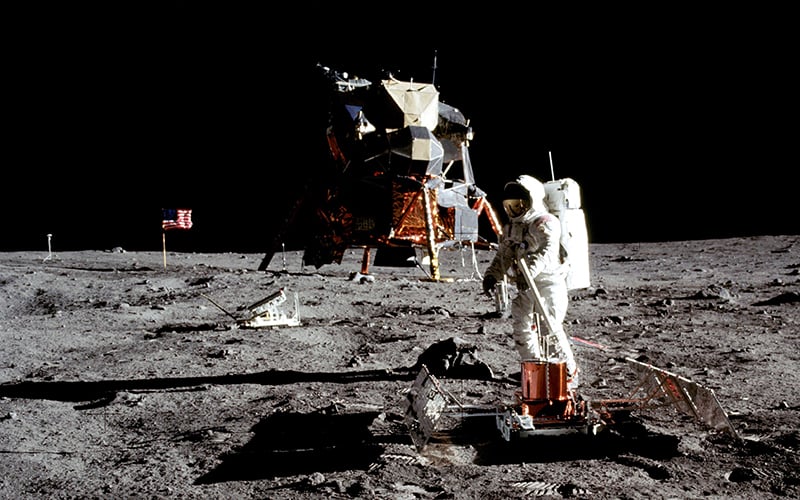
Neil Armstrong’s iconic first words spoken on the moon were heard on Earth thanks to technology made in Scottsdale. (Photo courtesy of NASA)
PHOENIX – When Neil Armstrong touched foot on the moon 50 years ago this month and said, “One small step for man, one giant leap for mankind,” his iconic words could be heard back on Earth thanks to technology made in Scottsdale.
General Dynamics Mission Systems, which was a division of Motorola at the time, built the radio transponders used in the Explorer, Mercury, Ranger, Mariner and Gemini missions before ultimately broadcasting Armstrong’s words to nearly 600 million people across the world.
That moment – on July 20, 1969 – also is what inspired Manny Mora, vice president of space and intelligence systems at General Dynamics, to become an engineer.
“I used to see that as one of the most amazing things, how could we launch what essentially looked like an airplane into outer space, and then have it come back and land,” Mora said. “One of the main reasons I came to work for Motorola is because of that history they had with the Apollo missions and NASA and landing on the moon.”
Mora said Motorola had never tested the Unified S-Band transponders in space before Apollo 11. So those first words on the moon were the first time a transmission had been sent at that distance.
“That was breakthrough technology, that was breakthrough capability,” he said. “This was the first time that full link was established, and it worked as designed.”
Mora has been with General Dynamics for 35 years and has witnessed the company at the forefront of GPS technology and its partnership with NASA for other missions, such as communications with the Hubble telescope and the Mars rovers.
“The technology on the Mars rovers is very similar to the technology from the Apollo 11 missions and the evolutions there,” Mora said. “Now there’s another major initiative by our country to go back to the moon and put a man on the moon, but this time, it’s more to establish habitat on the moon.”
Mora said he’s proud to work at a company that had such a major role in one of the most important events in American history: the space race with the Soviet Union, which started in October 1957 with the launch of Sputnik, the first man-made satellite.
“We feel proud of that legacy that we have that we enabled that transmission of the voice and the data that the American public saw on their television sets when man first landed on the moon,” Mora said.
Follow us on Twitter.